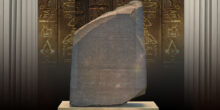Petrie Museum of Egyptian Archaeology in London: A Pharaonic Treasure in the Heart of Britain

Table of contents
- The Origins of the Petrie Museum An Academic Journey with a Pharaonic Twist
- What Makes the Petrie Museum Unique?
- Petrie’s Adventures in Egypt From Excavation to Exhibition
- Visiting the Petrie Museum What to Expect
- Tips to Enhance Your Petrie Museum Experience
- How to Get to the Petrie Museum in London
- Why Visit the Petrie Museum in 2025?
- Conclusion Step Into Egypt’s Ancient Wonders
- FAQ Your Top Questions About the Petrie Museum Answered
If you’re a history enthusiast or fascinated by ancient civilizations, the Petrie Museum of Egyptian Archaeology in London is a must-visit destination. Tucked within University College London (UCL), this hidden gem houses one of the world’s largest collections of Egyptian and Sudanese artifacts outside Egypt—over 80,000 rare pieces that transport you back to the age of the Pharaohs and the mighty Nile. In this guide, we’ll dive into the museum’s history, its standout exhibits, and why it’s an unmissable stop for anyone exploring Egyptian heritage in London.
The Origins of the Petrie Museum: An Academic Journey with a Pharaonic Twist
Founded in 1892 as part of UCL’s Department of Egyptian Archaeology and Philology, the Petrie Museum began as an educational resource for students and researchers. Its story started with a collection donated by English writer Amelia Edwards, a passionate advocate for Egyptology. However, it was the legendary archaeologist William Flinders Petrie who truly shaped its legacy. Through his groundbreaking excavations in Egypt, Petrie unearthed priceless treasures, which he sold to UCL in 1913. These efforts transformed the museum into a global hub for studying ancient Egyptian culture.
What Makes the Petrie Museum Unique?
While the Egyptian Museum in Cairo, the British Museum in London, and the Egyptian Museum in Berlin boast larger collections, the Petrie Museum stands out for its focus on rare artifacts that reveal the daily lives of ancient Egyptians—not just royal relics. Here are some of its most remarkable highlights:
- The World’s Oldest Linen Fabric: Dating back to around 5000 BC, this piece showcases the Egyptians’ mastery of textile craftsmanship.
- Twin Lion Statues from the Temple of Min: Crafted around 3000 BC, these sculptures reflect the artistry of early Egyptian civilization.
- Kahun Papyrus: The earliest known medical document addressing women’s health, dating to 1800 BC.
- Fragment of Egypt’s Oldest King List: From 2900 BC, this artifact traces the origins of Pharaonic rule.
Petrie’s Adventures in Egypt: From Excavation to Exhibition
William Flinders Petrie wasn’t just an archaeologist—he was a true adventurer. Leading digs at sites like Tell el-Amarna (Akhenaten’s city), Hawara, and Meidum, he uncovered statues, mummies, and everyday tools that reshaped our understanding of Egyptian history. These finds, now displayed in London, aren’t just objects—they’re living stories of a civilization that thrived thousands of years ago.
Visiting the Petrie Museum: What to Expect
Nestled near UCL’s Science Library in Malet Place, the museum’s humble setting—once a horse stable before its relocation in the 1950s—belies its treasures. Inside, glass shelves brim with artifacts, giving the feel of a secret archaeological vault. Best of all, admission is free, and it’s open Tuesday to Saturday from 1:00 PM to 5:00 PM, making it a budget-friendly stop for history lovers.
Tips to Enhance Your Petrie Museum Experience
- Book a Guided Tour: Unlock the stories behind the rarest pieces with expert insights.
- Take Your Time: With so much to see, allow ample time to soak it all in.
- Bring a Camera: Photography is permitted, and the lighting is perfect for stunning shots.
How to Get to the Petrie Museum in London
Located at Malet Place, London WC1E 6BT, the museum is a short walk from Euston Square Tube station. If you’re in central London, it’s also near landmarks like the British Museum, making it an ideal addition to a cultural day out.
Why Visit the Petrie Museum in 2025?
In a tech-driven world, the Petrie Museum offers a rare chance to connect directly with the past. Whether you’re a student, researcher, or simply curious, it delivers an unforgettable journey into the Pharaonic era. With cultural tourism booming in London in 2025, this museum is a perfect escape from the crowds, blending history with intimacy.
Conclusion: Step Into Egypt’s Ancient Wonders
The Petrie Museum of Egyptian Archaeology isn’t just a museum—it’s a portal to one of history’s greatest civilizations. With its rare artifacts and rich legacy, it deserves a spot at the top of your London itinerary. Ready to uncover the secrets of the Pharaohs? Plan your visit today and experience this Pharaonic treasure in the heart of Britain firsthand
FAQ: Your Top Questions About the Petrie Museum Answered
The Petrie Museum is renowned for its vast collection of over 80,000 Egyptian and Sudanese artifacts, including the world’s oldest linen fabric and rare daily-life items from ancient Egypt.
Yes, entry is completely free, making it an accessible option for tourists and locals alike.
Take the Tube to Euston Square station, then walk a few minutes to Malet Place, WC1E 6BT.
It’s open Tuesday to Saturday, 1:00 PM to 5:00 PM—perfect for an afternoon visit.
While the British Museum offers grand displays, the Petrie Museum provides a more intimate look at everyday Egyptian life with rare, lesser-known artifacts.





